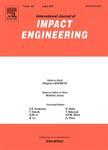版权所有:内蒙古大学图书馆 技术提供:维普资讯• 智图
内蒙古自治区呼和浩特市赛罕区大学西街235号 邮编: 010021

作者机构:State Key Laboratory of Advanced Design and Manufacturing Technology for Vehicle Hunan University Changsha 410082 China Battery System Development Department Contemporary Amperex Technology Co. Ltd Ningde 352100 China Shenzhen Huashun Intelligent Equipment Co. Ltd Shenzhen 518119 China Shenzhen Automotive Research Institute Beijing Institute of Technology Shenzhen 518119 China
出 版 物:《International Journal of Impact Engineering》 (Int J Impact Eng)
年 卷 期:2025年第206卷
学科分类:12[管理学] 1201[管理学-管理科学与工程(可授管理学、工学学位)] 08[工学]
基 金:National Natural Science Foundation of China, NNSF, (52375331, 52175315) National Natural Science Foundation of China, NNSF Fundamental Research Funds for the Central Universities, (531118010862) Fundamental Research Funds for the Central Universities Shenzhen Science and Technology Innovation Program, (KQTD20200820113110016) Shenzhen Science and Technology Innovation Program
主 题:Fracture strain High strain rate Machinal performance Test piece design Two-step tensile test
摘 要:Continuous forming at high strain rates is an important research direction for future precision forming of light alloys. In this study, dynamic behavior of AA5052 aluminum alloy in two-step tensile testing at high strain rates were investigated. Special two-step tensile test piece at high strain rate was designed. The test piece of the special design contained a weak structural notch area and a dog-bone shaped area. The test piece was pre-stretched to a pre-determined strain so that the weak region broke. Then a secondary stretching was performed. The response surface equations of pre-strain and pre-strain rate were established separately to evaluate the functional relationship between the notch interval, tensile velocity and strain rate, and equivalent plastic strain. The effects of the parameters on the fracture strain were compared. The results showed that the test pieces could meet the requirements of the two-step tensile test at high strain rates. The pre-strain and pre-strain rate were affected by the size of the notch interval and the tensile velocity. The increase of tensile strength was related to pre-strain and secondary strain rate. The linear cumulative damage criterion can be used to interpret the two-step stretching at high strain rates. When the strain rate in single-step stretching is the same as the strain rate in each step of two-step stretching, the fracture strain in single-step stretching can be substituted for the fracture strain in two-step stretching. Research can help solve the problems of poor formability and early failure of lightweight alloys.